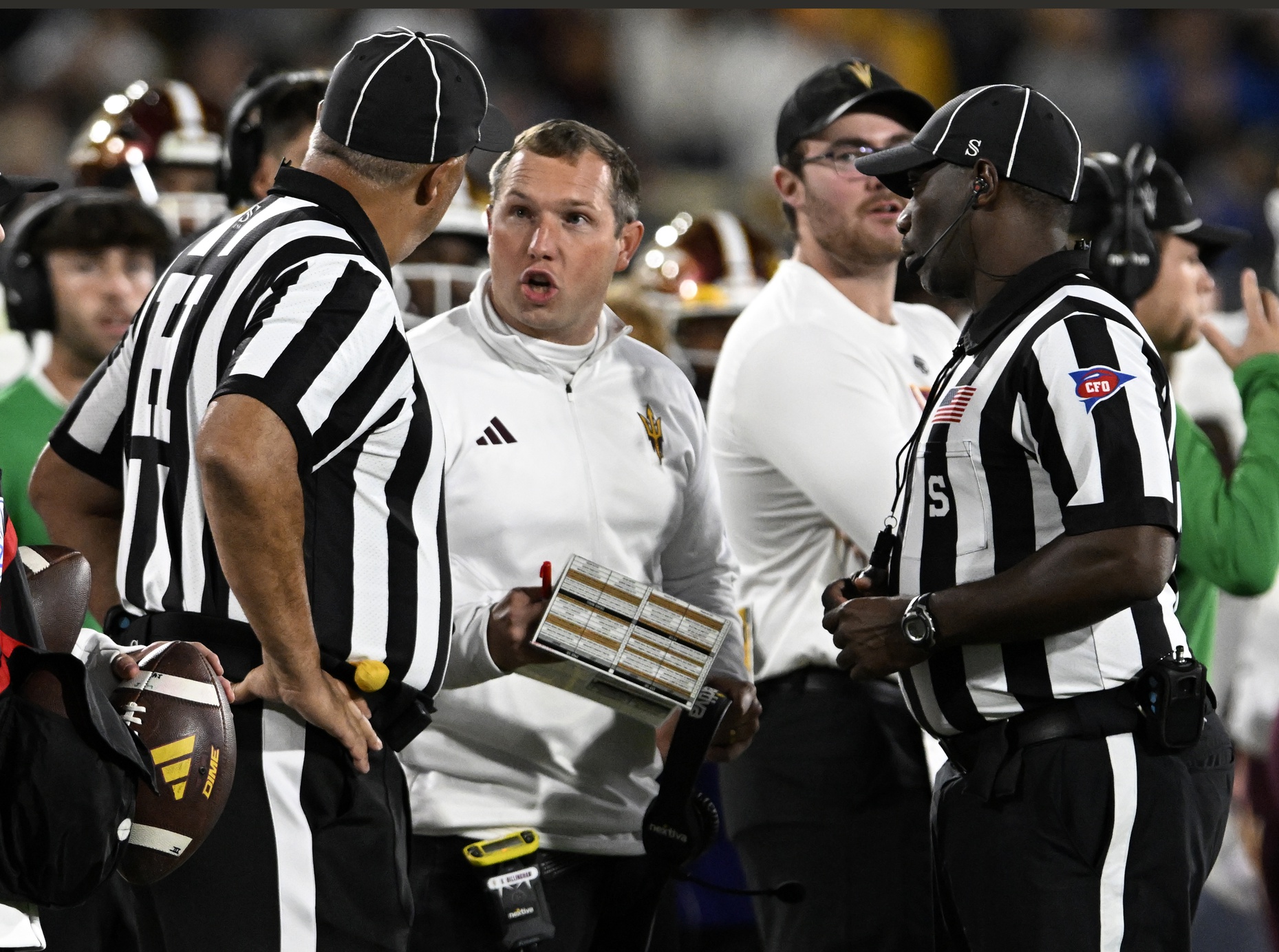One of the biggest differences between NFL and college football rules has been the existence of a two-minute warning in the pro game. Now, the college game is following, adding a break at the two-minute mark of the second and fourth quarters.
But college football will use the term “two-minute timeout” instead of the NFL’s two-minute warning. So, why is that?

College Football’s 2-Minute Timeout
When the College Football Rules Committee changed the rules around first down and out-of-bounds timing last season, it was only a matter of time before the college game enacted a break at the two-minute mark of each half.
When originally enacted by the NFL, the league’s two-minute warning existed to truly warn teams that the half was nearing its end, as stadiums rarely displayed the clock where teams could see.
MORE: Simulate the College Football Season with CFN’s College Football Playoff Predictor
But now that the college game is enacting its own break at the two-minute mark of each half, the term is going to be slightly different. In college, it will be a “two-minute timeout” and not a “two-minute warning.”
The point of the two-minute timeout is two-fold.
First, it will serve as a hard break between the different rules that exist for the majority of the game and in the final two minutes of each half. These differences include the clock stopping after a first down, when a player goes out of bounds, and extra regulations regarding forward fumbles that exist in the final two minutes of the half but not for the rest of the game.
The two-minute timeout serves as a hard break to allow referees to change these timing rules.
It also serves to break up the dreaded “touchdown, media timeout, kickoff, media timeout” rhythm that exists in college football.
By shifting a media timeout to a designated time in each half, there should be one less media timeout earlier in the half. Whether or not it actually has that effect remains to be seen.
Why Is It Called a 2-Minute Timeout Instead of a 2-Minute Warning?
When the Rules Committee makes changes to the rules of college football, the goal is usually to make things clearer and be more specific in language.
When the original Two-Minute Warning was implemented in the NFL in 1942, stadiums were smaller, technology was inferior and referees kept time on the field. Coaches and players couldn’t see the clock on a scoreboard, so the break at the two-minute mark was called a “Two-Minute Warning” since it was a true warning.
Since the teams have access to the scoreboard and clock, the break isn’t “warning” anyone of anything. Accordingly, the break will be called a two-minute timeout. If it looks like a timeout, sounds like a timeout, and acts like a timeout, it’s a timeout.
The second reason is that the College Football Rules Committee wants to keep the college game different from the pro game.
While many of the rules being adopted (helmet communications, first down timing, etc.) may look like those in the NFL, the college game still wants to stand on its own. The College Football Transfer Portal looks a lot like NFL free agency, but it’s not (so they say).
Similarly, a two-minute timeout is different than a two-minute warning, at least according to the Rules Committee.
The name distinction is already making headlines and getting people talking. Rece Davis made a Week 0 joke on College Gameday about getting it right, which is ironic because he will occasionally call it a Two-Minute Warning on EA Sports College Football 25.
In all likelihood, announcers will slip up and say “warning.” Just know that, at least to those in charge of college football, there’s a difference. It’s a “two-minute timeout.”
Now you know.
College Football Network has you covered with the latest news and analysis, rankings, transfer portal information, top 10 returning players, the college football season schedule, and much more!

